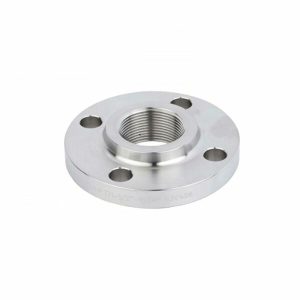Threaded flanges are a type of flange that have threads on the inner bore, allowing them to be connected to pipes or fittings with matching threads. They are commonly used in piping systems where welding is either not feasible or not desired.

Here’s how they work and how they’re used:
- Connection: Threaded flanges connect to pipes or fittings with threads. They screw onto the pipe or fitting, creating a tight seal.
- Sealing: Like other flanges, threaded flanges provide a seal between two pipes or fittings. The threads create a secure connection, preventing leaks and ensuring the integrity of the piping system.
- Versatility: Threaded flanges offer versatility in installation. They can be easily installed or removed without the need for welding equipment, making them suitable for temporary installations or situations where disassembly may be required.
- Pressure Rating: Threaded flanges are available in various pressure ratings to suit different applications. It’s important to select the appropriate pressure rating for the specific requirements of the piping system.
- Materials: Like other types of flanges, threaded flanges are available in a variety of materials, including carbon steel, stainless steel, brass, and other alloys. The choice of material depends on factors such as the type of fluid being transported, environmental conditions, and the required strength and corrosion resistance.
- Applications: Threaded flanges are commonly used in low-pressure piping systems, such as those found in plumbing, heating, air conditioning, and water distribution systems. They are also used in industries such as oil and gas, chemical processing, and pharmaceuticals, where the convenience of threaded connections may be advantageous.

